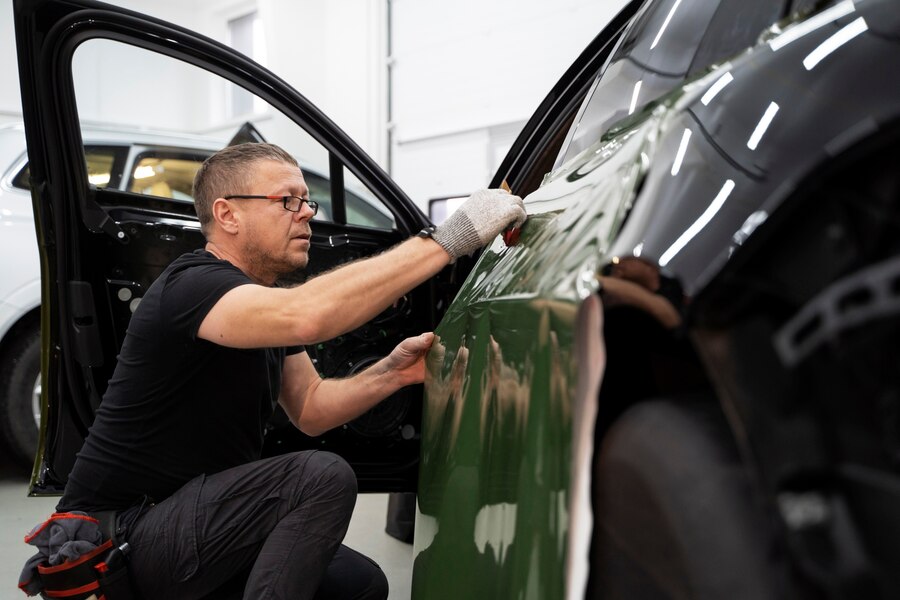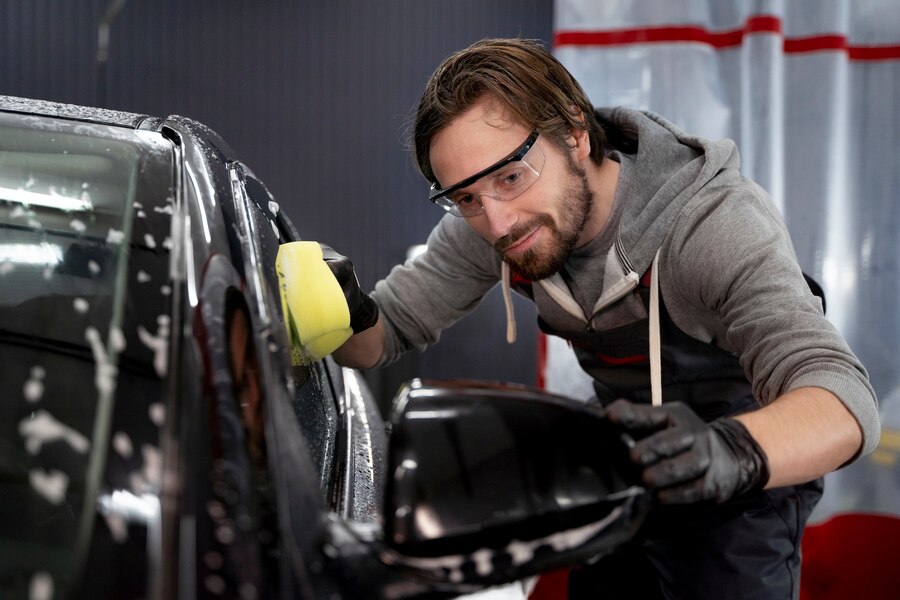Learn How To Wrap Vehicles

Learn how to wrap vehicles with the essential techniques and skills needed to deliver high-quality, durable results in this dynamic field.
1. Understanding Vehicle Wraps:
A vehicle wrap involves covering a car, truck, van, or any other type of vehicle with a thin vinyl film. This vinyl can display anything from a solid color to complex graphics and advertisements. The primary reasons for wrapping a vehicle include advertising a business, upgrading its aesthetic appeal, or protecting its original paint job.
Read More: Learn How To Write Numbers
Key Benefits::
Versatility:Vinyl wraps can be applied to almost any vehicle surface.
Reversibility:Unlike paint, wraps can be removed, restoring the vehicle to its original condition.
Durability:High-quality wraps can last up to 7 years with proper care.
Cost-Effectiveness:Wraps often cost less than a professional paint job, especially for full graphics or advertisements.
2. Pre-Wrap Preparation:
The quality of a vehicle wrap directly correlates with the amount of preparation done beforehand.
Cleaning:The vehicle must be thoroughly washed and cleaned of any wax, oil, or dirt. Any contaminants left on the surface can cause the vinyl to bubble or peel.
Repair:Address any scratches, dents, or rust spots. These imperfections can prevent the vinyl from adhering correctly.
Remove Hardware:For a seamless finish, remove exterior parts such as mirrors, trim, and badges. This allows the wrap to cover as much surface area as possible without interruptions.
3. Choosing the Right Materials:
Not all vinyl is created equal. For professional vehicle wraps, use high-quality, vehicle-grade vinyl. These materials are designed to stretch and conform to the vehicle’s contours, ensuring a smooth, bubble-free application.
Cast Vinyl:Ideal for full vehicle wraps due to its flexibility and longevity.
Calendered Vinyl:More suitable for flat surfaces and partial wraps because it’s thicker and less conformable.
Additionally, consider the finish of the wrap. Gloss, matte, satin, carbon fiber, and metallic finishes can all significantly impact the final look of the wrap.
4. Application Techniques:
Mastering the application process requires practice and patience. Here are some foundational techniques:
Measuring and Cutting:Measure the vinyl carefully, leaving enough excess to ensure full coverage without stretching the material too thin.
Heating and Stretching:Use a heat gun to gently warm the vinyl, making it more pliable. Avoid overheating, as this can damage the vinyl and cause discoloration.
Squeegeeing:Use a squeegee to apply the vinyl, starting from the center and moving outwards to eliminate any bubbles and ensure adherence.
Post-Heat Treatment:After application, go over the wrap with a heat gun to activate the adhesive further and check for any missed bubbles or imperfections.
Read More: X.ai Stock How To Buy
5. Aftercare:
Proper maintenance can extend the life of a vehicle wrap. Regularly clean the wrap with non-abrasive products designed for vinyl. Avoid high-pressure washes and waxing, as these can lift the edges of the wrap and cause peeling.

Conclusion Learn How To Wrap Vehicles
Vehicle wrapping is both an art and a science, offering a unique blend of aesthetic customization and marketing potential. By understanding the processes, materials, and techniques involved, professionals can deliver exceptional quality wraps that stand the test of time. Like all skilled trades, proficiency in vehicle wrapping comes with experience.
Dedicate time to practice, seek feedback, and continually update your knowledge on the latest materials and techniques to keep your skills sharp and your wraps looking spectacular.Whether for business advertising or personal expression, a well-executed vehicle wrap can turn any vehicle into a moving masterpiece.

